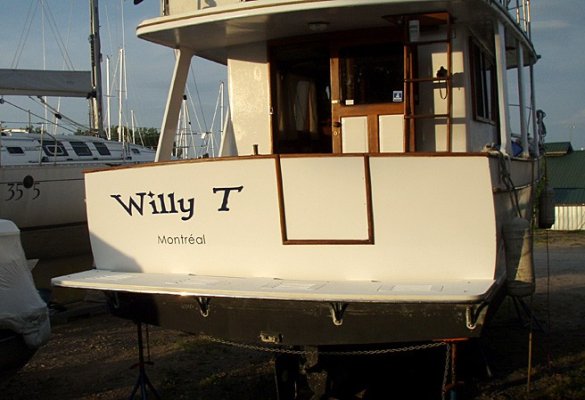Fotoman--- We've used the roll and tip method on smaller areas of our boat (main cabin door, aft head bulkheads) and while we achieved very satisfactory results, the technique will never be as glass smooth as a proper spray job. A friend who has the sailboat in the slip across from us used to be the chief engineer at Uniflite. Lately he's taken to repainting the topsides of his boat. He is using a very small spray gun which seems to require minimum masking and generates very little overspray and the results are best described as perfect.
He's helped us on a number of projects on our boat and when we were undertaking to repaint our aft head I asked him about painting methods. He said that while spraying unquestionably gives the best result (assuming the surface has been prepped properly to begin with) the roll and tip method can be very effective, particuarly in places where spraying can pose problems with masking, wind, etc.
He showed us the roll and tip technique he uses and this is what we did. As I said, it looks great, we have no complaints, but it's not as great as a well-done spray job. If you have spray equipment already and know how to use it effectively and if masking, overspray, and weather are not issues for you, I would highly recommend that over roll and tip. However, if you do settle on roll and tip, it can look very nice indeed but there is a learning curve. Skipperdude's suggestion to practice on a piece of glass is an excellent one--- I wish we'd thought of that before our first experience with the technique.
In the not-too-distant future we want to undertake repainting the topsides of our boat. We'll start with a small area, probably the forecabin. Based on reports from people on the GB forum we'd initially determined to use the roll and tip method but after observiing our friend repainting his sailboat, it's obvious to us that spraying is the way to go, particularly in the very controlled way he does it.
-- Edited by Marin on Thursday 20th of May 2010 02:11:01 PM




